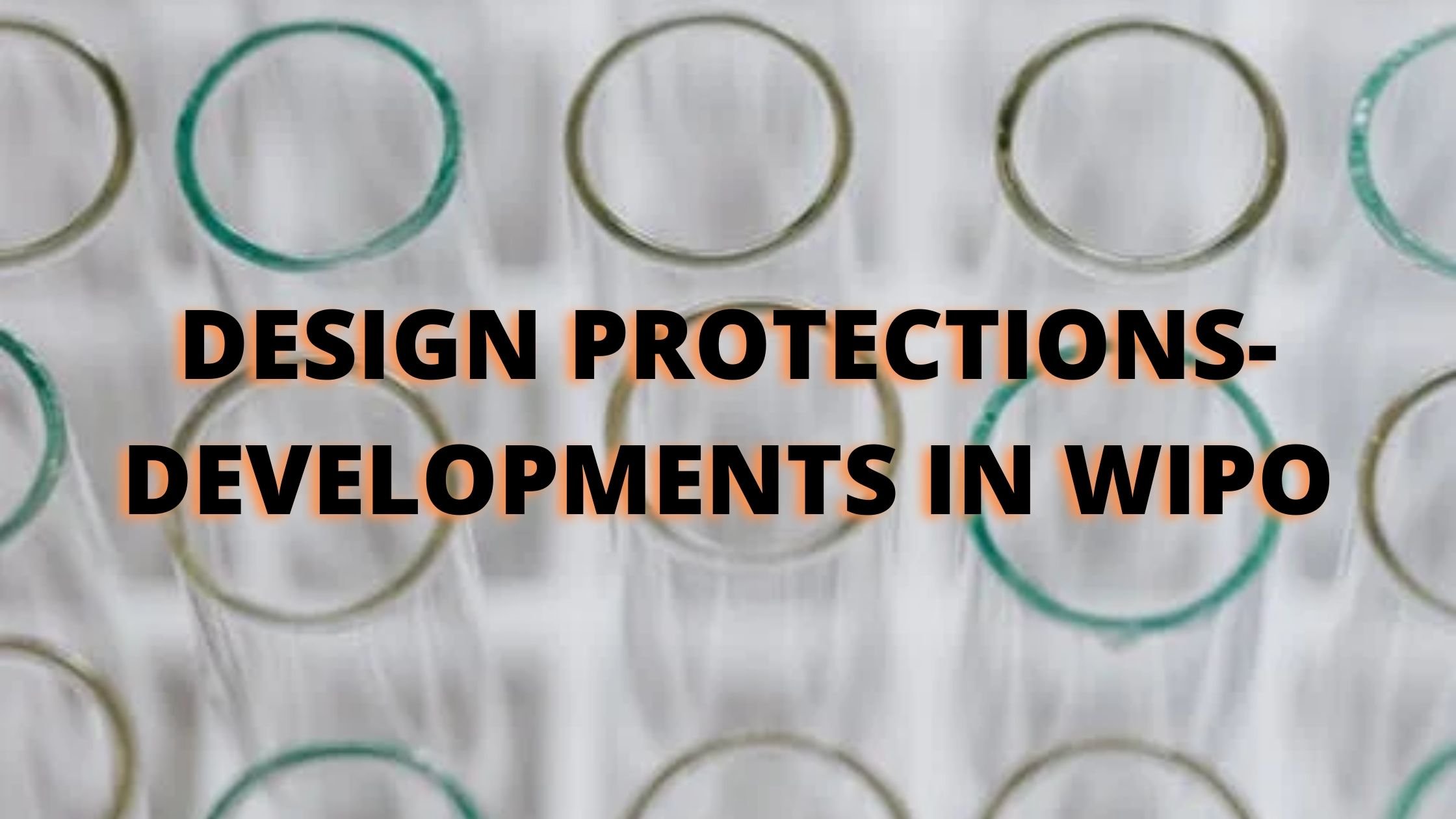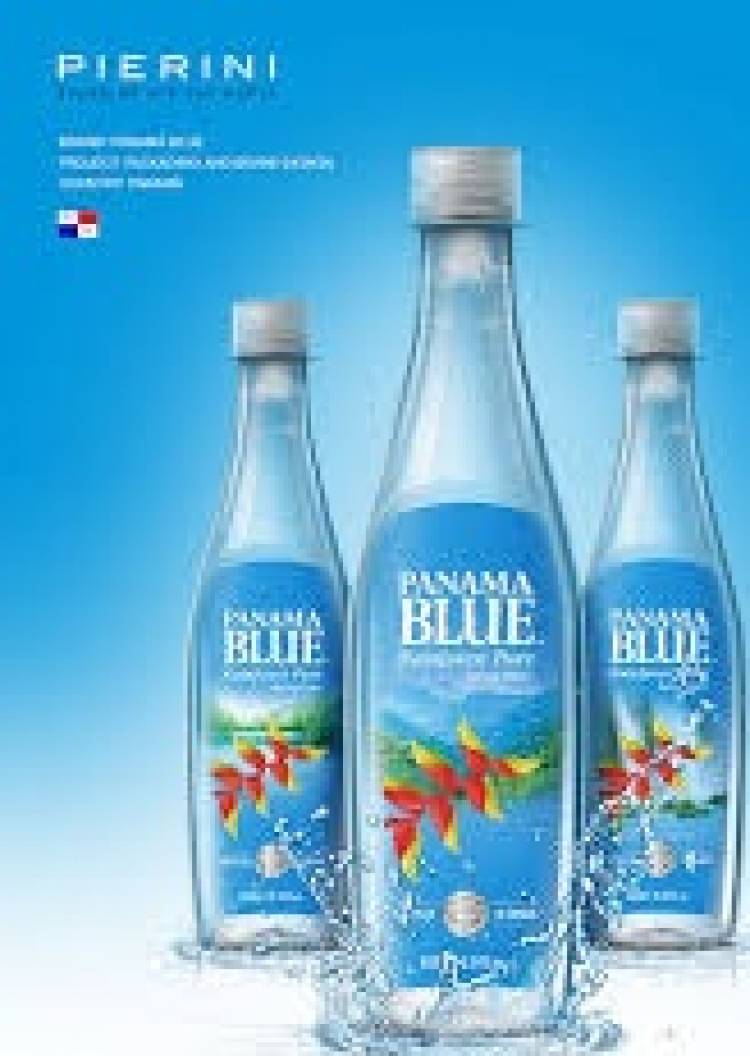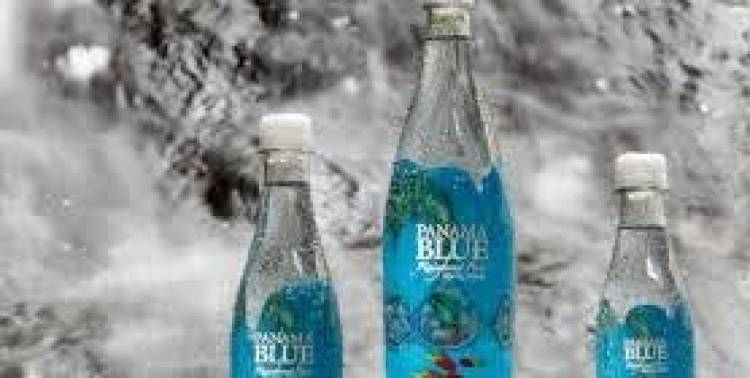DESIGN PROTECTIONS: DEVELOPMENTS IN WIPO
An Industrial Design is the part of Intellectual Property Right which provides protection to the visual design of objects so created by an organization for their product in which form they want to launch or sell their product in the market. It basically consists of designing the shape of a product configuration or composition or combination of pattern or color for a product in a two dimensional or a three-dimensional object, or any pattern used in the production of a product, an industrial commodity, or a handicraft, it may also consist very basic things related to a product like pictures, images, drawings, patterns, colours or lines.

DESIGN PROTECTIONS: DEVELOPMENTS IN WIPO
Introduction:
An Industrial Design is the part of Intellectual Property Right which provides protection to the visual design of objects so created by an organization for their product in which form they want to launch or sell their product in the market. It basically consists of designing the shape of a product configuration or composition or combination of pattern or color for a product in a two dimensional or a three-dimensional object, or any pattern used in the production of a product, an industrial commodity, or a handicraft, it may also consist very basic things related to a product like pictures, images, drawings, patterns, colours or lines.
Legally an industrial design is defined as something which constitutes, consist of some ornamental or commercial value of a product or commodity so created by an organization. Industrial design is sometimes also referred to as “Design Patent”. The owner of an industrial design has right to stop or prevent as many as 30 organizations, person, or parties to Make, Sell or import any product consists of a design which visibly is a copy or a possible copy of a product design (so protected by the owner) only when such product is used for commercial purpose with aim of getting benefit out of it. Industrial designs can be applied to a wide variety of products in the market, like, packaging, container, furnishing, jewellery, textiles, etc. The protection of industrial design depends from country to country on who the legal system of the country works towards the protection of industrial design. Like in some countries industrial design needs to be registered then it can be protected under category of “Registered Design” in the country, in some countries it industrial design protection is treated as patent and hence categorized into “Patent Design” for protection, in some countries protection to industrial design is given without registration but with limited time and scope and under the category of “Unregistered Industrial Design”. For a product to be qualified for industrial design it must an original product and have some individual character. The duration of protection of industrial design varies from various rules and regulations applicable in different countries but generally, it varies from 10-25 years. The protection of industrial design helps to ensure a fair return on investment to the organizations and promotes fair competition and ethical trade practices in the market.
Design Protections: Developments in WIPO
World Intellectual Property Organization (WIPO) is one of the most prominent laws regulating bodies for the protection of Intellectual Property Rights around the world. It is one of the organizations of the united nations created in 1967. WIPO works in cooperation with various partner countries. It started working on 26th April, 1970. It works by;
-
Hosting various seminars and forums to discuss and create various rules and policies for protecting intellectual property rights;
-
Acts as a global registrar of intellectual property rights protection applications by various people and organizations from different partner countries;
-
It administers tribunals for protection and regulating disputes regarding intellectual property rights;
-
It establishes uniform standards to be followed for the protection of intellectual property rights and works as a general referencing database and world-leading organization administrating protection of intellectual property rights;
-
It administers 26 international treaties relating to intellectual property rights.
WIPO protects intellectual property rights by various rules and regulations so created by its governing body. so, for the protection of industrial design WIPO has created a system by the name ‘HAGUE- the International Design System’. With reference to this system, WIPO provides a suitable business solution for registering and protecting up to 100 designs through filing only one application valid international in over 91 partner associated countries. WIPO is currently working on drafting an international treaty to benefit designers around the world who seek design protection.
By this treaty, WIPO aims to simplify and harmonize a number of filling rules which currently varies from country to country. There are currently 9 major issues on which the standing committee of the law of trademark is working which ranges from modes of representation or illustration in an application, to simplifying filing of legal documents. Various issues such as technical assistance and capacity building commitments training and creating help center for the necessary help to people for creating awareness and inform them about redressal methods in case of any infringement in different countries is still a hot topic of debate amongst the delegates of WIPO. There are currently 60 partnering parties registered under the Hague Agreement. The Hague system aims to obtain protection in several countries by simply filing one application with the International Bureau of WIPO, in one language, with one set of fees in one currency. This system also simplifies the management of an industrial design registration as a single procedural step at the international bureau of WIPO. In 2013, in the 52nd series of meeting the committee decided to finalize its work on the text of the basic proposal for a design law treaty. The latest amendments in rules and regulations for governing industrial design were made in 2014. According to which the things which were amended were:
-
Choosing how to represent or illustrate a design in an application;
-
Reducing the number of copies of each illustration required for filing in the application;
-
Registering a set of related designs in a single application by a single applicant;
-
Gaining a secure filing date from which your design is protected under the Hague system;
-
Registering a design and obtaining secrecy 6-12 months after public disclosure;
-
Simplifying the procedures to present legally valid documents in another country.
Qualification of a product to be granted industrial design protection and cost for filling such protection applications may vary from country to country but for that WIPO has set a basic guideline according to which all the decision-making factors of regulating law in any country will work. According to general guidelines by WIPO, an application must follow steps such as:
-
Step-1: Filling of application;
-
Step-2: Evaluation by the authorized international or local committee;
-
Step-3: Substantive examination of the application;
-
Step-4: Registration with the head regulatory body;
-
Step-5: Granting of the grace period;
-
Step-6: Renewal (of old application);
Rejection of the application is completely at the discretion of the registering body under which the application is filed. Any application can be rejected if it does not follow any of the required guidelines in any way. According to the Hague System, an application for Industrial design can be filed in three ways which are the National route, Regional route, and international route.
CASE STUDY
PANAMA SPRINGS S.A PANAMA.
Panama Springs planned to expand its business in the global market and to compete with major international companies as it was going to enter the international market, it made a unique and different bottle design. For which the company developed a bottle made of Polyethylene Terephthalate with an original design in terms of both the physical bottle and the product label. For the design of the bottle, the company took a risky approach. The Panama Blue Bottle is a mixture of a square bottle and a round bottle. The bottom portion is square, towards the center the bottle tapers into a slim round shape, with a long neck and clear cap. It is made in such a way that the image of the bottle looks like an image of a glass bottle, not a PET bottle, which gives an impression of elegance and sophistication. The company wanted consumers to be able to see the water and feel how clear it is, so the company developed the Panama Bluebottle to give a very clear image.


The company takes great pride in the design of the bottle and label of its signature product. For securing the bottle design, the company applied to have it protected as an industrial design. The application was approved and registered in 2011.
BY:-
GAURAV GUPTA












